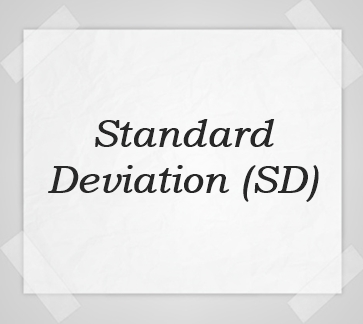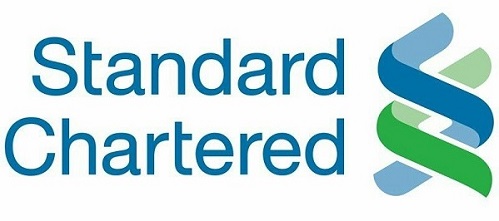
Table of Contents
Standard Deviation
What is Standard Deviation?
In simple terms, Standard Deviation (SD) is a statistical measure representing the Volatility or risk in an instrument. It represents the degree of spread or deviation of a set of values from their mean or average. SD tells you how much the fund's return can deviate from the historical mean return of the scheme.
A high standard deviation indicates that the data points are widely dispersed from the mean, while a low standard deviation indicates that the data points are clustered around the mean. This simply means that higher the SD, higher will be the fluctuations in the returns.

For instance, if a fund has a 12 percent average rate of return and a standard deviation of 4 percent, its return will Range from 8-16 percent.
Standard deviation is commonly used in many fields, including finance, physics, and social sciences, to analyze and interpret data and make statistical inferences. It is a useful tool for understanding the variability and distribution of data sets and for identifying outliers or unusual data points.
How to Calculate Standard Deviation?
To find standard deviation on a mutual fund, add up the rates of return for the period you want to measure and divide by the total number of rate data points to find the Average Return. Further, take each individual data point and subtract your average to find the difference between reality and the average. Square each of these numbers and then add them up.
Divide the resulting sum by the total number of data points less one -- if you have 12 data points, you divide by 11. The standard deviation is the square root of that number.
Let's understand better with illustration-
1. Find the Standard Deviation of both stocks
Let's find the SD of two different Mutual Funds. First, we will calculate their average return for the last five years.
Mutual Fund A: (11.53% + 0.75% + 12.75% + 32.67% + 15.77%)/5 = 14.69%
Mutual Fund B: (4.13% + 3.86% + {-0.32%} + 11.27% + 21.63%)/5= 9.71%
2. Calculate the variance of each stock
Since Standard Deviation is the square root of variance, we must first find the variance of each investment.
Then, you divide the sum of the squares from the first step by the 1 less the number of years (∑/n-1).
Mutual Fund A: (11.53%-14.69%)² + (0.75%-14.69%)² + (12.75%-14.69%)² + (32.67%-14.69%)² + (15.77%-14.69%)²= 0.052/4=.013
Mutual Fund B: (4.13%-9.71%)² + (3.85%-9.71%)² + (-0.32%-9.71%)² + (11.27%-9.71%)² + (21.63%-9.71%)²= 0.032/4=.008
3. Find the Standard Deviation for each
Mutual Fund A: √.013= 11.4%
Mutual Fund B: √.008= 8.94%
Talk to our investment specialist
4. Standard Deviation in Excel
Excel offers the following functions:
STDEV.P to calculate standard deviation based on the entire population
STDEV.S to estimate standard deviation based on the sample
Using the functions one can determine the SD of the fund.
Example of Standard Deviation in Mutual Funds
| Mutual Fund Name | Standard Deviation |
|---|---|
| Aditya Birla Sun Life Focused Equity Fund | 13.63 |
| JM Core 11 Fund | 21.69 |
| Axis Bluechip Fund | 13.35 |
| Invesco India Largecap Fund | 13.44 |
| Invesco India Largecap Fund | 13.44 |
Standard Deviation Trading Strategy
Here is an example of a standard deviation Trading Strategy:
Identify the mean price: The first step is to calculate the mean or average price of the asset you want to trade. This can be done by analyzing historical price data or by using a Moving Average.
Calculate the standard deviation: Once you have the mean price, calculate the standard deviation of the price data. A high standard deviation suggests high volatility, while a low standard deviation suggests low volatility.
Determine the trading range: Based on the standard deviation, set a trading range for the asset. For example, you might decide to only buy the asset when the price falls two standard deviations below the mean, or to sell when the price rises two standard deviations above the mean.
Monitor the market: Keep an eye on the Market and adjust your trading strategy as needed based on changing market conditions.
It's important to remember that trading involves risk, and no strategy can guarantee profits. Always use caution when trading and consider consulting a financial advisor or professional before making any investment decisions.
All efforts have been made to ensure the information provided here is accurate. However, no guarantees are made regarding correctness of data. Please verify with scheme information document before making any investment.












